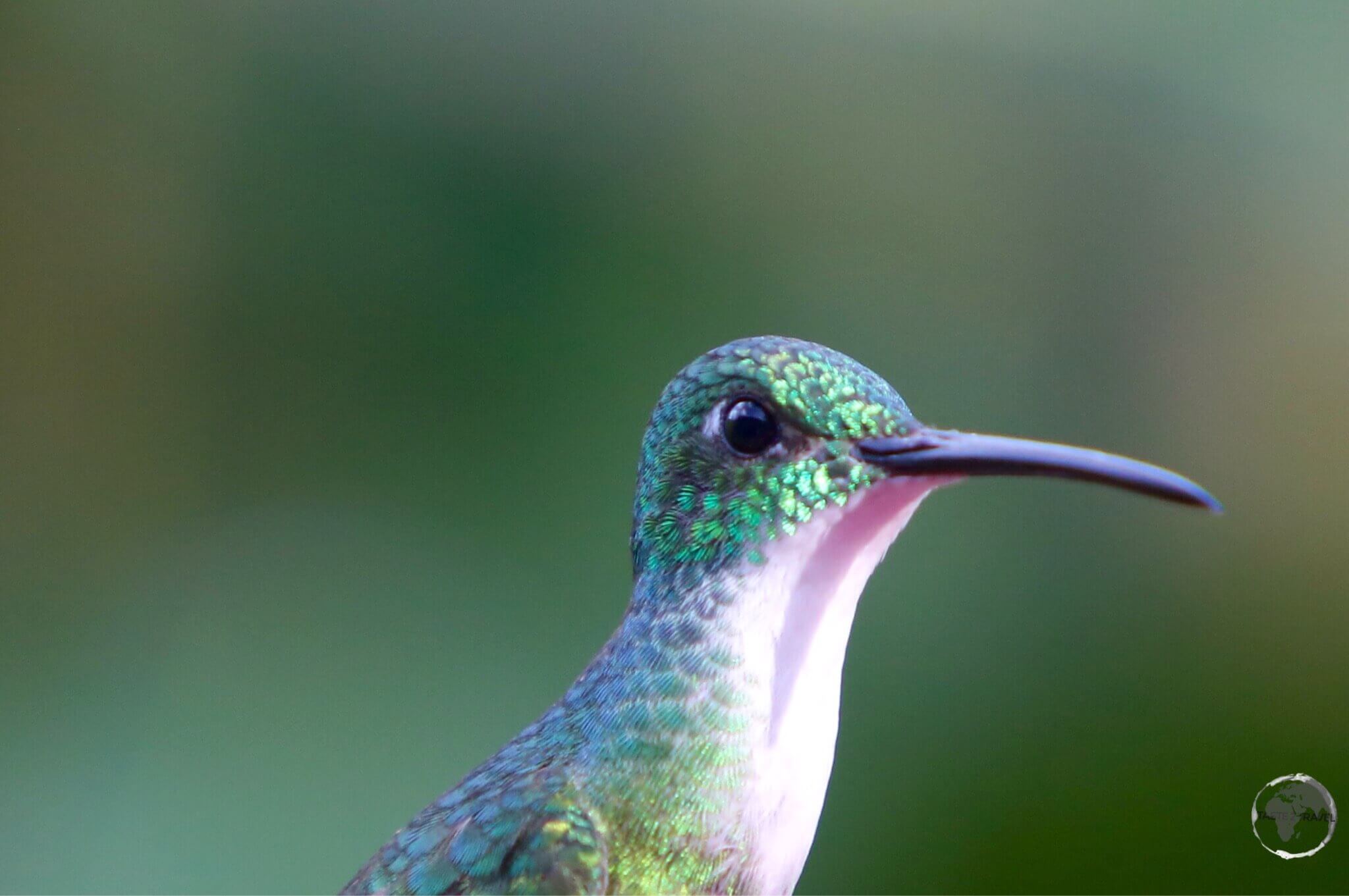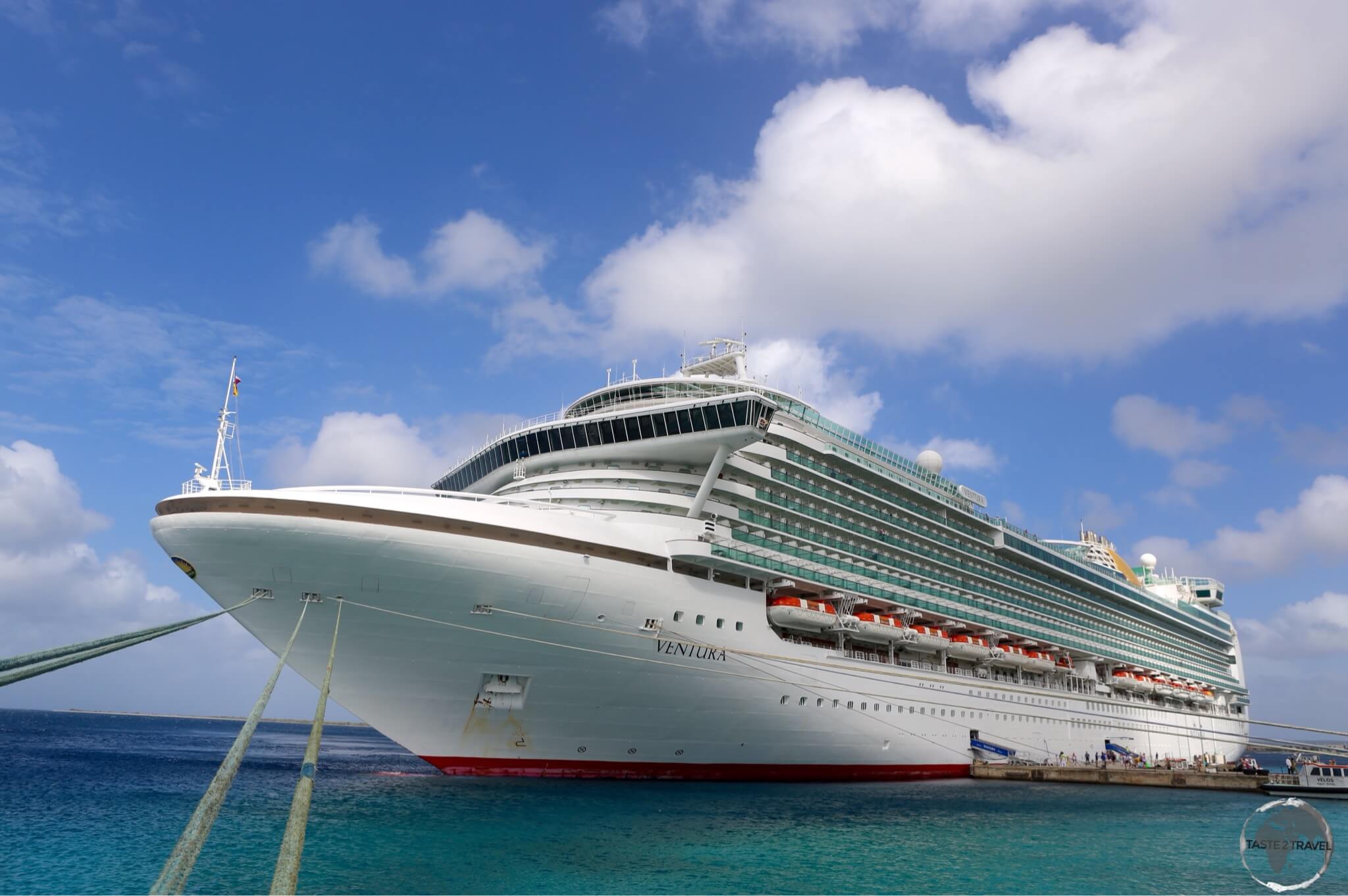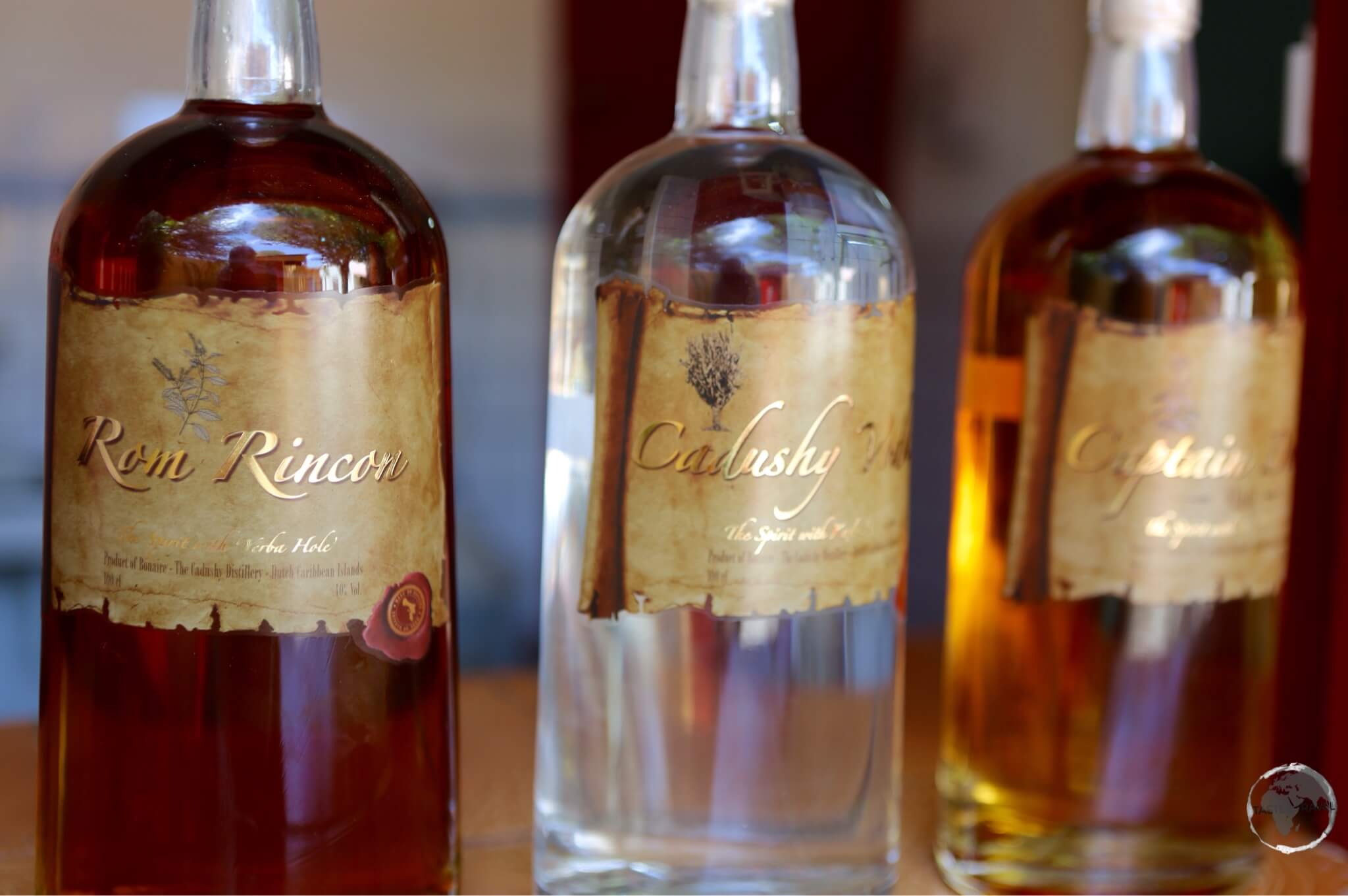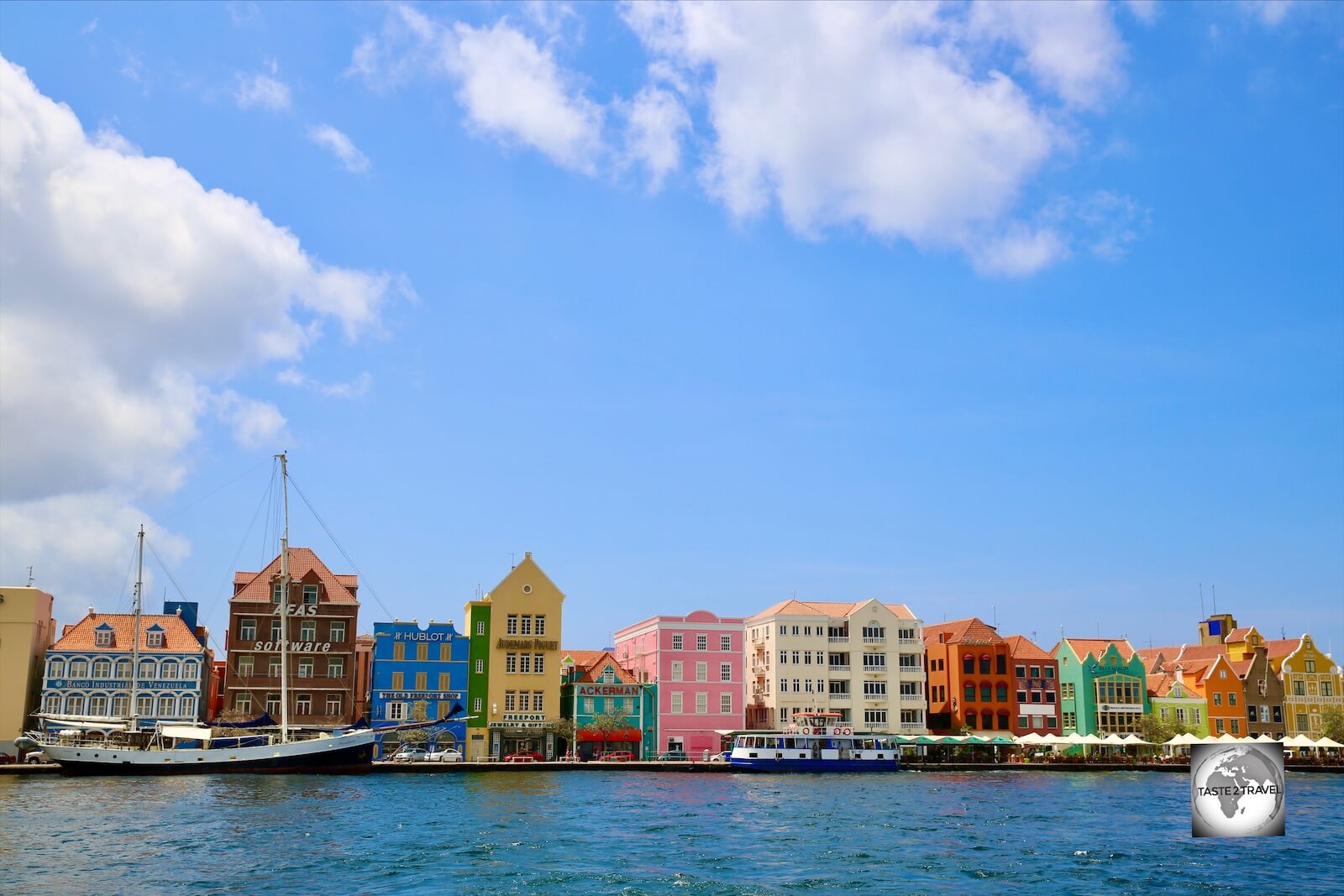Barbados Travel Guide
Welcome to the taste2travel Barbados Travel Guide!
Date Visited: April 2015
Introduction
In the days when royalty and the rich and famous could fly Concorde to their favourite holiday destination there was just one regularly scheduled destination – Barbados!

Typical Bajan artwork for sale at a gallery in Bridgetown.
The island has always marketed itself as a playground for the rich and famous and as such is not considered a budget destination – but, despite the marketing, you can still have an affordable holiday here. A very pleasant destination, Barbados (population: 280,000) is 34 km in length and up to 23 km wide and is easily explored with a rental car.

Colourful Chattel Houses, Barbados.
Location
Unlike most Caribbean nations, Barbados does not form part of any other island chain – it stands alone, and sets itself part, in many respects.
The island is located 168 km east of the windward islands of Saint Vincent and the Grenadines and 400 km north-east of Trinidad and Tobago. It is a huge chunk of raised limestone seabed located in the middle of nowhere. Barbados also lies outside of the hurricane belt.

An inviting west coast beach on beautiful Barbados.
History
The island was originally inhabited by native Kalingo until the Spanish arrived in the 16th century. The British arrived in 1625 and claimed the island.
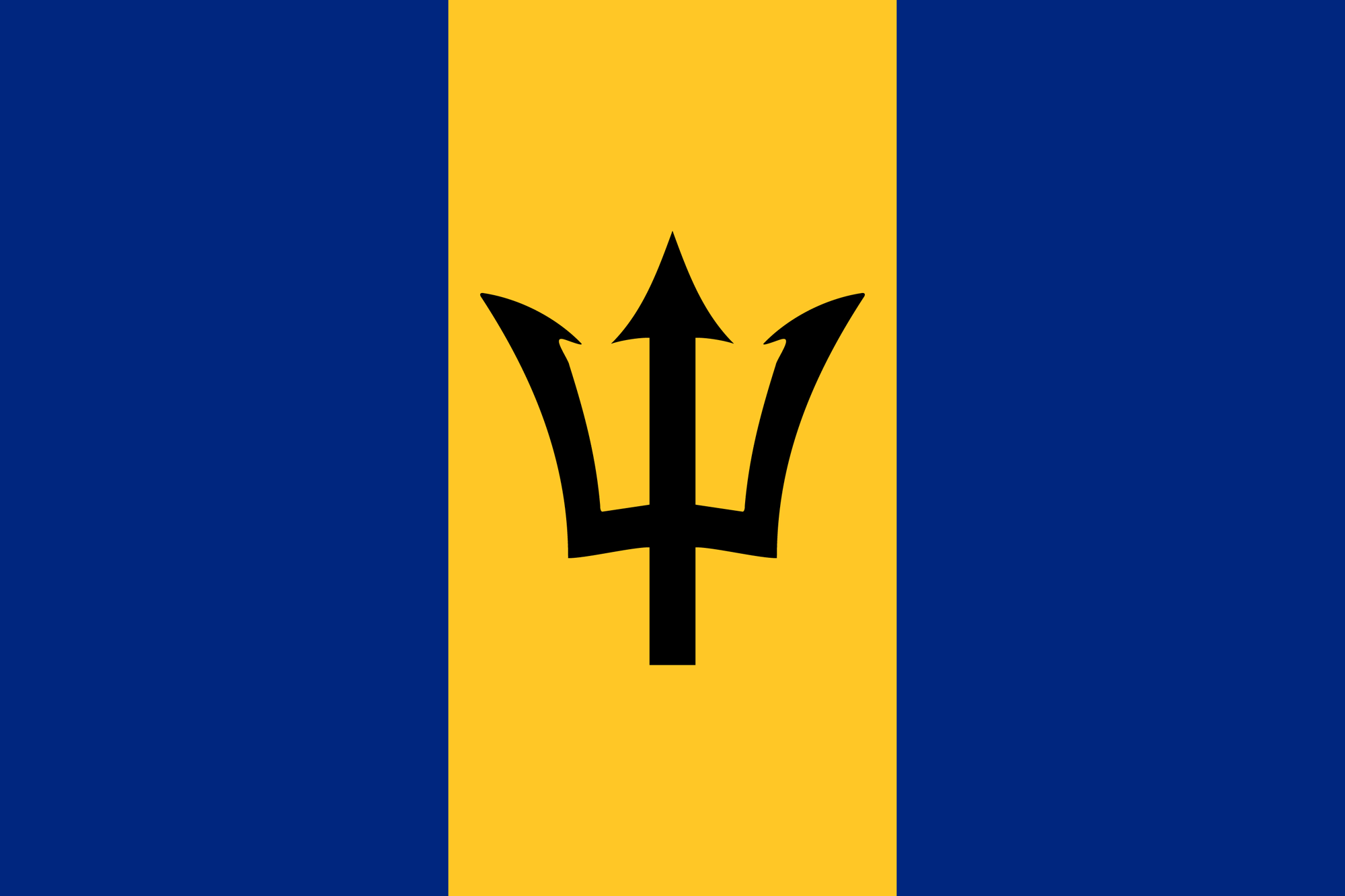
The flag of Barbados features Neptune’s Trident at its centre.
The British ran the island as a plantation. Most of the population today are descendant from the slaves who were brought to the island from Africa to work on the plantations.

A violet ‘Chattel’ house, a uniquely Barbadian word for a small move-able wooden house.
One of the legacies from the slavery era is the Chattel house, these can still be found all over the island. They are small, collapsible wooden houses that can be transported easily and were used by the slaves who would often move between different plantations.
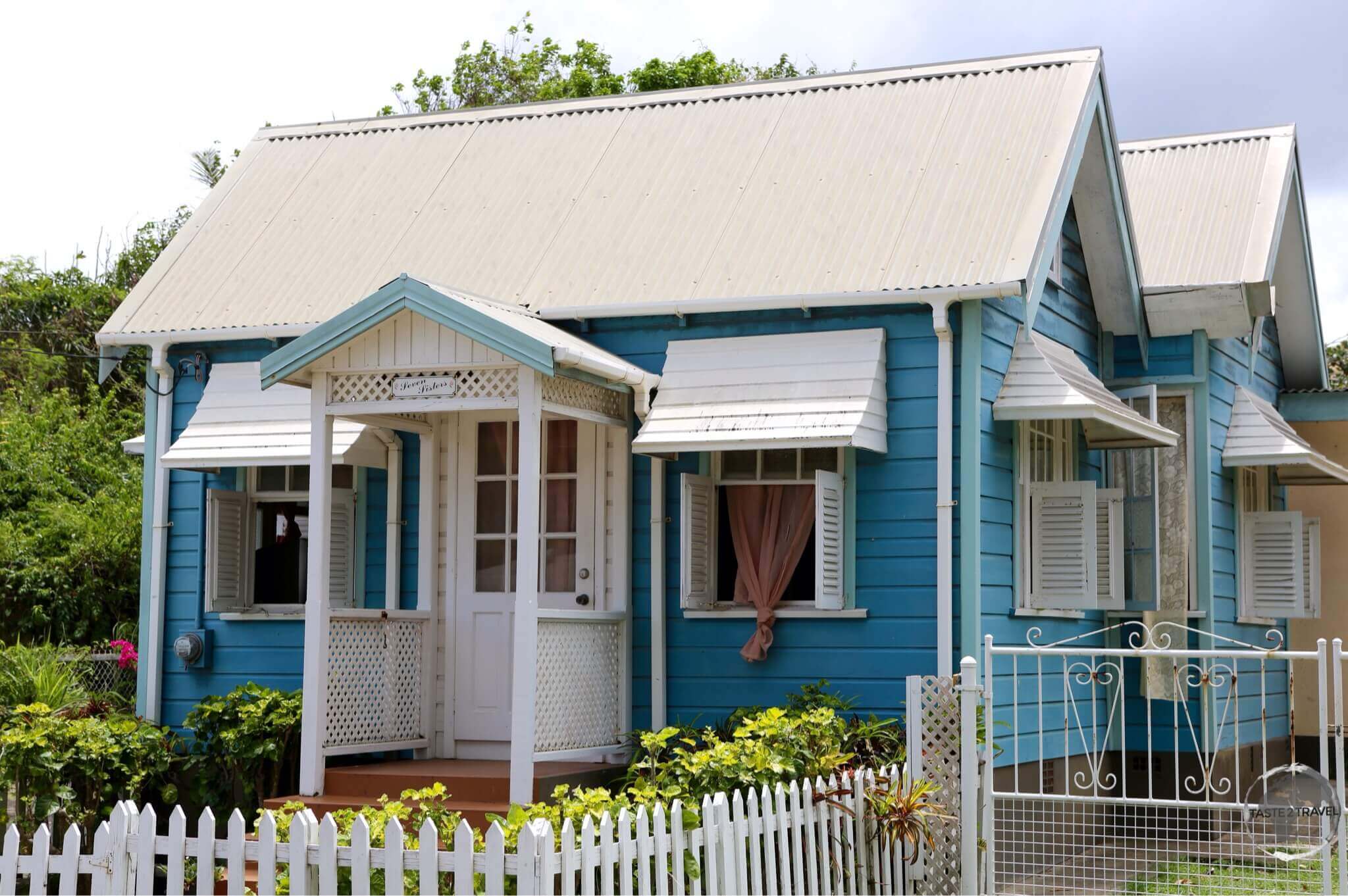
A typically cute Chattel House on Barbados.
Barbados remained in British hands until independence in 1966. Due to its historical ties to the UK, Barbados today remains more ‘British’ than any other Caribbean island and is often referred to as ‘Little England’.

This renovated pink Chattel house now serves as an artist’s studio near Bridgetown.
Sightseeing
Bridgetown

The coral-limestone clock tower of the Parliament Building, Bridgetown, Barbados.
The capital and largest city (population: 110,000), Bridgetown is listed as a UNESCO World Heritage site. At the centre of this compact capital, the Parliament Building is the seat of the Parliament of Barbados. Built between 1870 and 1874, the buildings have been the meeting place for both chambers of Parliament since 16 June 1874, and a former site of Colonial administration of Barbados. It consists of two buildings in the neo-Gothic architectural style, and are reminiscent of the Victorian era of Great Britain.

Reflection shot of the coral-limestone government buildings in Bridgetown, Barbados.
The buildings are situated along the north bank of the Constitution River and are bordered by Upper Broad Street and National Heroes Square to the south; strategically at the heart of the capital city Bridgetown. Prior to the establishment of the buildings the legislature met at the Town Hall building on Coleridge Street.

The Bajan parliament building in Bridgetown is constructed from coral limestone rock.
Downtown you will find many fine coral-limestone buildings, one of which houses the Barbados museum. Bridgetown is a busy, bustling city but most sites and can be covered on foot in one day.
The best coffee in Bridgetown is available from the cafe on the 1st floor of the Cave Shepherd department store on Broad Street.

A gift shop on Barbados.
George Washington House

The George Washington House Museum, Barbados.
George Washington House in Barbados is a historic house where the future first U.S. President George Washington visited, in 1751. He was 19 years old at the time and travelling with his ailing half-brother, Lawrence Washington. Barbados was the only country Washington ever visited outside colonial America.
The House, which is now operated by the Barbados National Trust, provides a glimpse into the Barbados of 250 years ago. The museum cafe, Coffee Barbados Cafe, serves some of the best coffee and brunches on the island.

Funky Rastafarian hats for sale on Barbados.
Barbados Museum and Historical Society

The Barbados Museum and Historical Society In Bridgetown.
Established in 1933 in the old Military Prison at the historic Garrison, the Barbados Museum & Historical Society is a private museum which houses 500,000 artefacts which depict the islands rich history and natural history.
Displays range from Bajan fauna and flora, natural history and Amerindian artefacts from the original settlers of the Barbados.
Around the Island

An antique mileage indicator on Barbados.
Mount Gay Rum

Mount Gay rum selection, Barbados.
Barbados is a rum lover’s paradise. Rum is an integral part of Barbadian culture and with 12,000 rum shops scattered across the island, you are never far from your next drink.
Barbados claims to be the birthplace of rum. It is the home of several brands, including Malibu.

The deluxe, Mount Gay XO, too smooth to be used in a rum punch.
Established in 1703, the Mount Gay company has spent over 300 years perfecting rum. It is the oldest commercial rum distillery in the world. The rum is distilled in the north of the island but the visitor centre is on the northern outskirts of Bridgetown and is open to visitors Monday – Friday. The distillery offers a choice of a standard tour or you can join a cocktail making class, which is a lot of fun.
There’s a restaurant onsite offering lunch and of course, the rum never stops flowing. My favourite is the XO, which is nice and smooth and should be drunk neat – too good to be wasted in a rum punch. All details regarding visits are available on the Mount Gay website.
Harrison’s Cave

One of the many vast underground caverns at the Harrison’s cave complex.
Located in the interior uplands in the parish of St. Thomas, Harrison’s cave is worth a visit. Barbados is a raised slab of limestone so there are numerous caves on the island but this is the most impressive. Unfortunately you are not able to walk through the cave. Visitors are instead shuttled around on solar-powered trams.
Animal Flower Cave

A view of the sea on the north coast of Barbados from inside the Animal Flower cave.
The Animal Flower cave is located in the cliffs at North Point at the northern tip of the island in St. Lucy’s parish. The cave is accessible via a series of coral steps, which descend through what use to be the blowhole.

A view of the north coast of Barbados from North Point.
‘Animal Flower’ is a local term for a sea anemone, which lives in the salt water pools in the cave. The cave looks out onto the sea but during high tide the cave is closed as waves come crashing in through the entrance.

Colourful ceramic houses for sale at a souvenir shop on Barbados.
Concorde Experience

Concorde experience
Parked in a custom-made hangar just off the runway at Grantley Adams International airport is Concorde G-BOAE, which used to fly weekly from London to Barbados until 2003. When BA ended the Concorde program this one was donated to Barbados.

The British Airways Concorde which is open to visitors at the Barbados Concorde Experience.
A visit to the museum includes a guided tour inside the plane – the only chance for mere mortals to view the interior of the Concorde and to sit in one of its seats – and dream.
Sunbury Plantation House

The historic Sunbury Plantation House, Barbados.
Located in the parish of St. Philip, and dating from the 1600’s, Sunbury Plantation House is a renovated former ‘great’ house which, today, serves as a period museum, filled with majestic furniture and a bevy of antiques. In the late 1800’s, the Barbados Railway included a stop at Sunbury Plantation, one of four train stations in St.Philip parish
St. Andrews Parish Church

St. Andrew’s Parish Church, Barbados.
Located on the east coast of Barbados, St. Andrew Parish is dominated by the historic St. Andrew’s Parish Church. The original church was established circa 1630, but was destroyed by a hurricane in 1831 – the current church dates from 1846.
Morgan Lewis Windmill

The Morgan Lewis windmill is the oldest windmill on Barbados.
Located in the parish of St. Andrew, the Morgan Lewis windmill has the distinction of being one of just two working sugar windmills in the world today. The mill stopped operating in 1947 and, in 1962, was gifted to the Barbados National Trust for preservation as a museum.
Codrington College

Codrington College, Barbados.
Located on a hill in the parish of St. John, overlooking the Atlantic ocean, Codrington College offers one of the most spectacular views of the East Coast of Barbados. One of the oldest colleges in the Caribbean, Codrington College was founded with the profits from the bequest of Christopher Codrington, the former owner of Codrington Plantations, after his death in 1710.

Water Lily at Codrington College, Barbados.
The setting of Codrington College is especially beautiful with a large garden, magnificent lily pond and a driveway lined with palm trees.
East Coast

Bathsheba Beach is a typical east coast beach on Barbados.
Beaches on the east coast of Barbados are exposed to the rough Atlantic Ocean and are not as ideal for swimming. It is much quieter on this coast with most people swimming on the calmer leeward side of the island.
Andromeda Gardens

The alluring Jade Vine Flower at the Andromeda Gardens, Barbados.
Located in the parish of St Joseph, a short drive from Bathsheba Beach, the Andromeda Gardens started life as a private plant collection around the home of Iris Bannochie, a leading horticulturalist.
The garden today, which is operated by the Barbados National Trust, is considered the most attractive gardens on the island. Named after the Greek mythological figure of Andromeda, one of the highlights of the garden is the trellis covered with the very unique Jade Vine Flower.
Barbados Beaches

Typical west coast beach
Barbados has more than 110 km of beaches and being a huge slab of limestone, the beaches are often white powdery sand (from crushed coral) with turquoise waters.
The beaches on the west coast are amazing and it’s here you’ll find most of the hotels and tourist infrastructure. Wherever you are on the west coast the view is of a quintessential Caribbean beach.

Sunset on the west coast of Barbados.
Accommodation
There is a range of accommodation options for all budgets on the island from deluxe resorts to hostels.
High season prices apply from mid-December to mid-April.
I stayed in two different hotels on the island:
- Silver Point Hotel, located in Silver Sands, Christ Church parish (18 km south of Bridgetown).
- Worthing Court Apartment hotel, located across from a beautiful beach in Worthing (7 km south of Bridgetown).
Barbados is a busy island so best to book ahead using an online agent such as booking.com
Eating Out
Like other Anglo-Caribbean islands, Bajan cuisine contains English, Indian and African influence, which has been fused with the local seafood and produce.
In downtown Bridgetown there are many restaurants offering lunch specials to the local office workers. Here you can sample local specialities at local prices.
Visa Requirements
Some nationalities require visas for Barbados – check your visa requirements prior to arrival.
Getting There
By Air
All flights arrive at Grantley Adams International Airport, which is located 13 km south of Bridgetown in the parish of Christ Church.
The airport has direct service to destinations in the Caribbean, United States, Canada, Central America, South America and Europe.
It also serves as the second hub for LIAT (hopefully you are not subjected to the terrible service of this Caribbean monopoly airline too often).
By Sea
There are no scheduled ferry services connecting Barbados to any other island. The only way to arrive by sea is by private yacht or cruise ship.
Getting Around
Public transport on Barbados is excellent. Frequent buses connect most places of interest. You can check routes on the Barbados transport board website
Hiring a car will allow you to explore the more remote parts of the island. The island can be covered in 2-3 days.
Safe Travels!
Darren
Follow me on Instagram:
[instagram-feed feed=1]
Further Reading
Other travel reports from the Caribbean region include:
- Anguilla
- Antigua & Barbuda
- Aruba
- Bahamas
- Barbados
- Bonaire
- Bermuda
- Cayman Islands
- Cuba
- Curaçao
- Dominica
- Dominican Republic
- Grenada
- Guadeloupe
- Haiti
- Jamaica
- Martinique
- Montserrat
- Puerto Rico
- Saba
- Saint Barthélemy (Saint Barts)
- Saint Eustatius (Statia)
- Saint Kitts & Nevis
- Saint Lucia
- Saint Martin/ Sint Maarten
- Saint Vincent & The Grenadines
- Trinidad & Tobago
- Turks & Caicos
- Virgin Islands (British)
- Virgin Islands (U.S.)
Barbados Travel Guide Barbados Travel Guide Barbados Travel Guide Barbados Travel Guide Barbados Travel Guide























